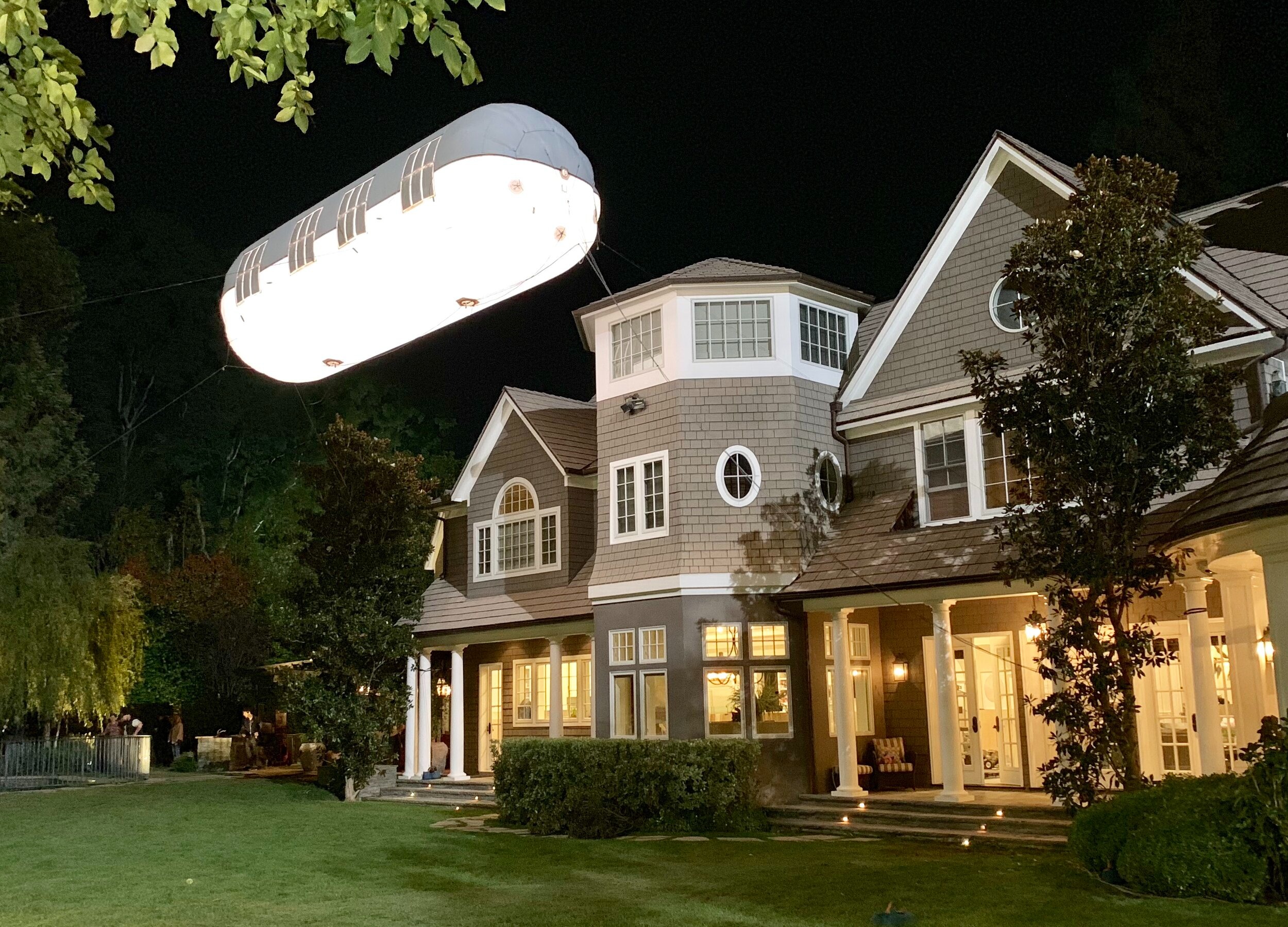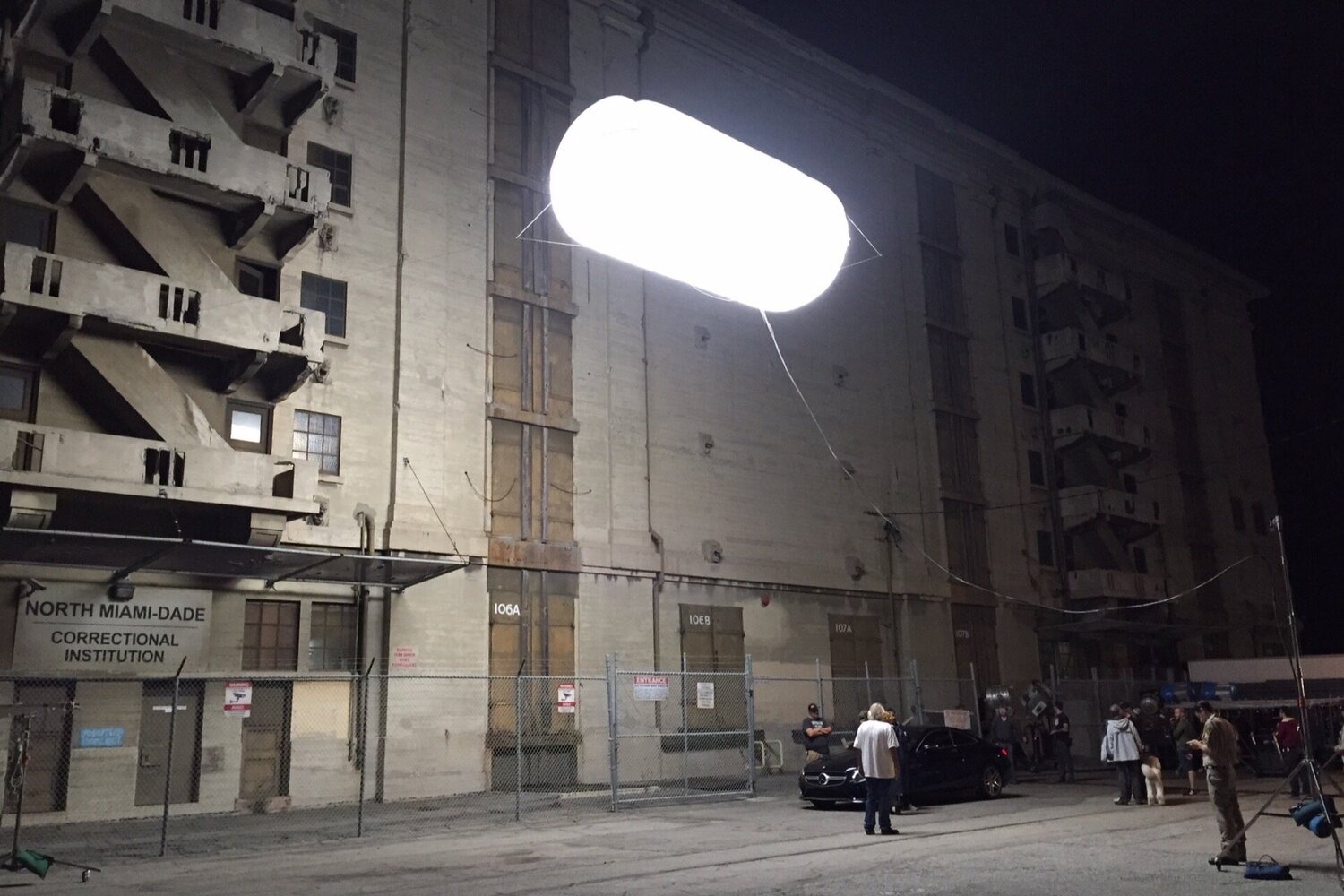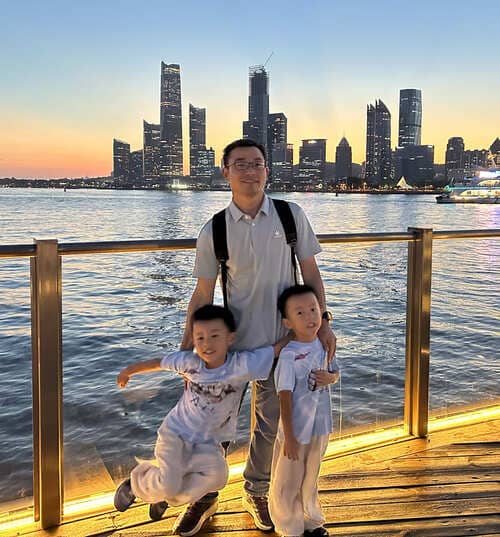Film sets need light that’s powerful, safe, and invisible to the camera. Traditional rigs are bulky and harsh. But balloon lights1 changed that. They quietly revolutionized how we light movie scenes—starting with the Titanic and still going strong today.
Balloon lights, pioneered by Airstar2, became a staple in film production by offering soft, omnidirectional, glare-free light that blends seamlessly into any shooting environment.

I was first introduced to Airstar’s Sirocco lights while working on a historical drama. We needed a moonlit look for a village scene with no visible fixtures. Traditional lights created too many hard shadows. But the Sirocco hovered above the set, giving us a natural glow. No shadows. No noise. It felt like real moonlight.
How Did Balloon Lights Change Big-Budget Film Production?
Back in the ’90s, lighting a large outdoor scene meant lots of gear—towers, stands, gels, cables. Everything was heavy and hard to move.
Airstar’s balloon lights became famous on James Cameron’s Titanic set by creating soft, even lighting across the giant ship decks without casting harsh shadows.

When filming Titanic, they had to light night scenes on open water sets. The balloon light floated high, casting a diffuse glow that made the set feel like real moonlight. It didn’t reflect in the water. It didn’t blind the actors. It created cinematic depth. After that, balloon lighting became part of every serious cinematographer’s toolkit.
Key benefits introduced on Titanic:
| Benefit | Impact on Set |
|---|---|
| 360° Light Distribution | Removed need for multiple rigs |
| Diffused Shadows | Enhanced realism |
| No Visible Fixtures | Clean frame, less editing |
| Silent Operation | Clear sound recording |
This innovation made it easier to shoot large scenes in fewer takes. It saved time. It changed lighting language forever.
How Are Balloon Lights Used on Modern Sets?
Today’s film sets are faster and leaner. Directors want flexible, wireless gear. Balloon lights now do more than they did 25 years ago.
Modern balloon lights like Airstar’s Crystal and Moonlightia’s LED towers offer wireless control, RGB options3, and battery-ready power—supporting everything from Netflix series to music videos.

Last year, I worked on a fantasy series where every night shoot needed different moods. One night, the director wanted icy blue. The next, golden twilight. We used RGBW balloon lights with DMX control. With just a few taps, we changed the entire look without moving anything.
These new towers are lightweight. Some run on battery for 6–8 hours. You don’t need big generators anymore. For location shoots in forests or rooftops, that’s a game-changer.
Examples of usage:
| Scene Type | Balloon Light Application |
|---|---|
| Period Drama | Soft white light simulating moonlight |
| Action Sequence | High-output flood with no shadows |
| Music Video | RGB color wash with real-time control |
| Fashion Shoot | Skin-tone friendly diffused lighting |
This flexibility is why even low-budget filmmakers now use balloon lights1. They cost less, do more, and speed up the shoot.
Why Do Balloon Lights Matter for Directors and Producers?
For producers, time is money. For directors, light is the story. Balloon lights satisfy both.
Balloon lights reduce setup time, improve visual consistency, and lower lighting crew size—saving productions both time and budget.

Airstar balloon lights need fewer stands. They cover a wide area, so you light the whole scene at once. That means fewer relights between takes. One director I worked with said he saved two hours per day just by using balloon lights. Over a 30-day shoot, that’s 60 hours saved. That’s thousands in cost.
Moonlightia’s new range focuses on speed and safety. Our towers inflate in minutes, with no extra rigging. We saw a crew light a 5000 sq. ft. night scene using just two LED balloon towers. No extra floodlights needed. Fewer cables. Safer for everyone.
For producers watching the clock, this makes a big difference.
What’s Next for Balloon Lighting in the Industry?
The industry is shifting. Wireless control. On-set power banks. Lightweight rigs for drones. Balloon lights are keeping up.
The next generation of balloon lights will focus on full smart integration—syncing with cameras, apps, and even AI scene planning tools.

I’ve already tested a system where balloon lights auto-adjust based on the lens angle. No operator needed. Just sync with the shot list and let the software handle brightness, color, and height.
Moonlightia and Airstar are leading here. While Airstar pushes RGB and show lighting, we focus on silent, durable builds that travel well and survive long sets.
Conclusion
From Titanic’s iconic decks to today’s drone-filmed music videos, balloon lights have become essential in film and TV—offering directors soft, flexible, and cinematic lighting that keeps evolving with the industry.
-
Discover how balloon lights enhance lighting techniques in film, providing soft, glare-free illumination for various scenes. ↩ ↩
-
Explore Airstar's innovative lighting solutions that have transformed film production with their unique balloon lights. ↩
-
Learn about the versatility of RGB options in film lighting, allowing for dynamic color changes to suit different moods and scenes. ↩




